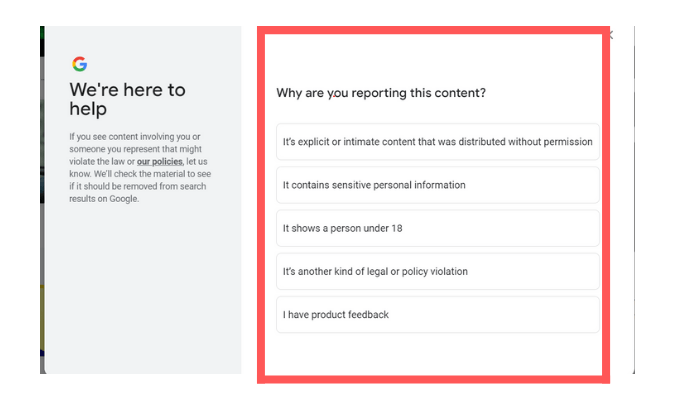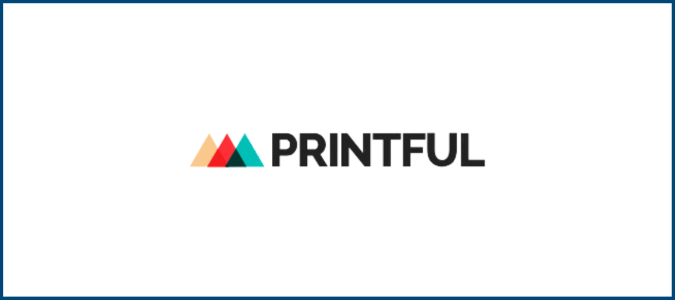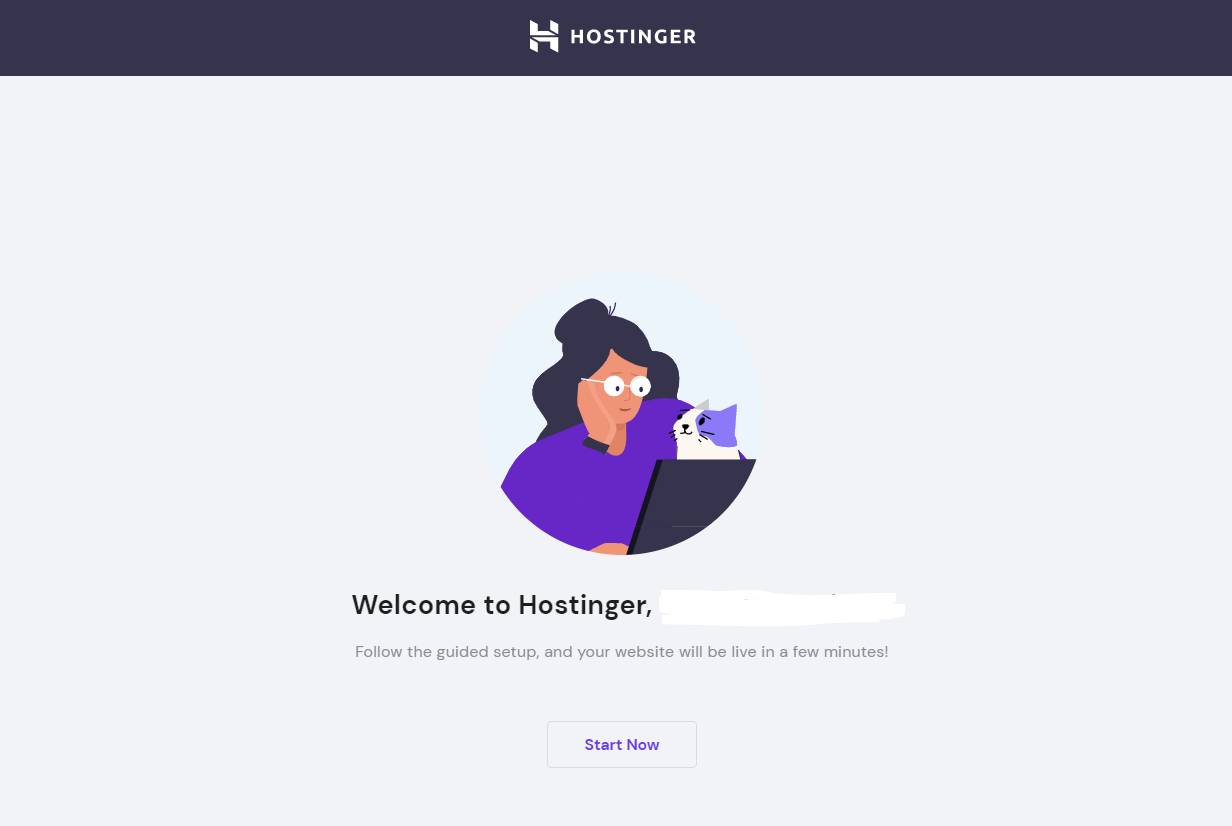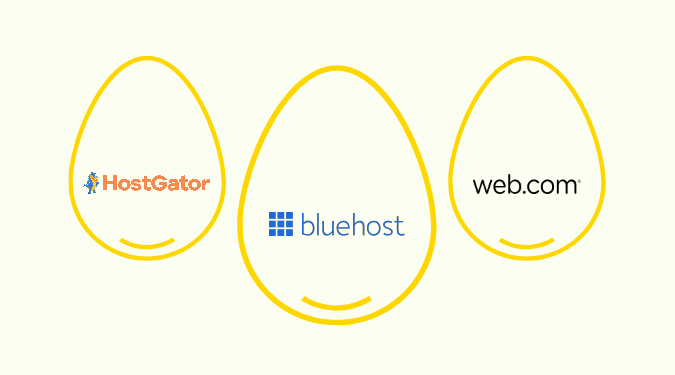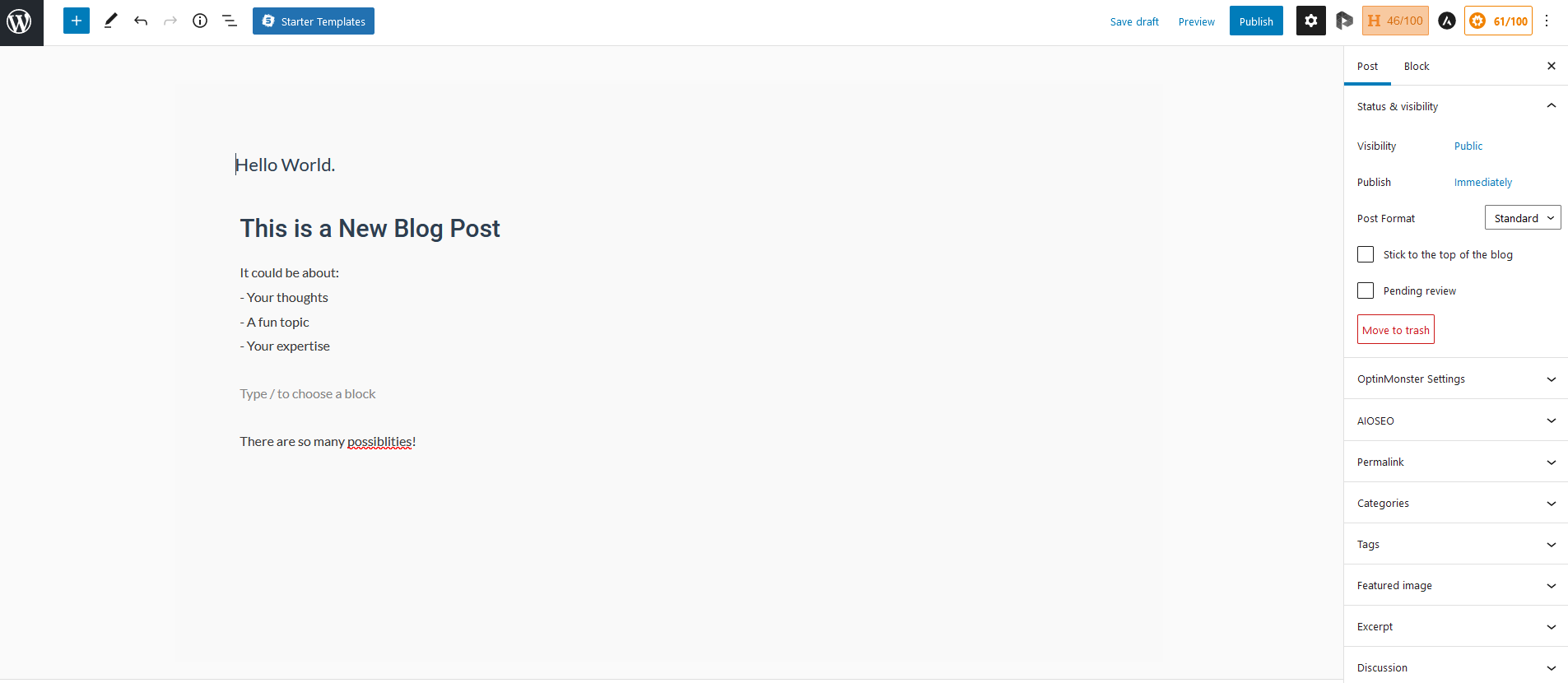Printify is a print-on-demand (POD) service that lets you put your designs on everything from t-shirts and hoodies to car mats and pillow covers. Pick a blank item from Printify, upload a design, and then select from one of Printify’s shipping partners. When a customer purchases the item from your store, Printify works with the shipping partner to deliver your designed product to them. It sounds like a perfect system. But is it? Let’s dig in.

Printify: The Good and the Bad
We tested Printify for ourselves and studied countless user reviews to learn what makes it tick. Throughout this process, we identified several strengths and weaknesses of the platform. Overall, Printify is easy to use and sports a useful free-forever plan. But there are a few key weaknesses we couldn’t ignore. Read on to find out what we loved—and didn’t—about Printify.
What Printify Is Good At
From its impressively easy-to-use interface to responsive seller support, there’s a lot to love about Printify. The company matches printing companies with casual designers—in this case, you—and helps you spread the word about your products. Playing a middleman role isn’t always easy, but Printify clearly tries its best. Here’s what we like about this POD company.
Easy to use: Printify is an incredibly intuitive print-on-demand service. When we tested the process, it took us just five minutes to create our first product. We chose a t-shirt from Printify’s product catalog and selected a US-based shipper with high ratings, then uploaded a photo to feature on the shirt. We added text to the front and back of the shirt, selected which sizes we wanted to make available, and modified the product description. The Printify dashboard is easy to navigate, too, and you can go in and edit products anytime.

One thing we really appreciated was the platform’s transparency. When you select a product from the Printify catalog, you’ll see exactly how much it costs from each printing partner. You’ll also see how much the shipping will cost. Once you pick a product and add a design to it, Printify will show you the suggested retail price for a 40% profit margin. If you edit the retail price, the profit margin will update to reflect the change.

Free plan: Printify offers a robust free-forever plan that includes a mockup generator, integrations with top ecommerce platforms, manual order creation, seller support, and custom order importing. You also get up to five stores per account and unlimited product designs. That’s enough for a lot of folks to get started with.
Once your sales start picking up, upgrade to the Premium plan to get a 20% discount on all products plus access to Printify Connect, a service that handles any reprints or refunds your customers might need. One caveat to be aware of is that Printify Connect only works with standalone shops. You won’t be able to access it if you sell on Etsy, Amazon, eBay, Walmart Marketplace, or even Printify’s own Pop-Up Store feature.
Product variety: Printify offers over 800 different products you can put your designs on, which is a huge selection to choose from. Printify offers classic POD items like hoodies, t-shirts, and calendars. But, it also gives you the option to customize dog collars, yoga mats, lunch boxes, luggage sets, slippers, stickers, and shower curtains. What’s not to love?

Integrations: Printify comes with its own ecommerce platform, Printify Pop-Up Store, which doesn’t give you a custom domain or any SEO features. It’s a pretty basic option that works well for the smallest of businesses, but won’t fit a serious ecommerce operation’s needs.
The good news is that Printify integrates with all of the major ecommerce platforms, including Shopify, WooCommerce, Etsy, eBay, Wix, PrestaShop, BigCommerce, Squarespace, and Walmart Marketplace. You can link your already established shop to your Printify account and start selling custom designs right away.
Customer service: Even though it doesn’t offer seller support by telephone unless you’re an Enterprise plan member, Printify provides 24/7 live chat support for everyone. And, because many of the customer reviews we analyzed praised the quick response time, we decided to test the live chat feature for ourselves. We were connected with an agent within about five minutes and found the interaction to be better than your average live chat support portal.
You can also reach out to Printify’s support team via email, Facebook Messenger, Twitter, and Instagram. Some users reported response times of an hour or two via these channels, which is pretty solid. They also shared that, in some cases, Printify had already resolved the issue by the time a seller support rep emailed the seller back, showing that Printify takes support requests seriously.
What Printify Is Lacking
Because it functions as a middleman between you and their printing partners, things can sometimes get lost in translation with Printify. Here are the three areas where we noticed Printify could improve.
Transparent shipping procedures: Even though Printify is good at being open about its pricing, there’s one thing that many users complained about: shipping speed.
When you pick a product and printing partner on Printify, you’ll see a number of business days next to the estimated shipping price, referring to the average production time for a product. It is not a shipping speed estimate. A few reviewers seemed to see the production time estimates and assume the products would get shipped that quickly, becoming frustrated when the product did not arrive to their customer within a day or two. However, other users noticed that their production speed was on the longer end of the average, which is frustrating as well.

Unfortunately, Printify doesn’t have much control over production and shipping because it works with third-party printing partners. A bit more transparency about average production and shipping times could help sellers adjust their expectations, though.
Consistent quality: If you browse any Printify forum or group on the web, you’ll notice that some printers are great…and others aren’t. Frustratingly, you could select a printer with a high rating only to get a low-quality product in the mail.
Printify creates the rating by taking a printing partner’s product quality, production speed, and stock reliability into account. The problem is, that rating is the same across all of a printer’s products. So, if a printer does an excellent job printing designs onto mugs, stickers, and phone cases but not onto t-shirts or journals, you might see a high overall rating that doesn’t reflect the exact quality of the product you’re considering.

Make sure you order samples of any product you design on Printify before you list it on your ecommerce storefront. And, you can get a lot of insight into the best printers for every type of product on Printify by browsing Printify’s subreddit or any of the various Printify Facebook groups out there.
Custom packaging: Printify doesn’t really offer a way to brand the packaging for any items its printing partners ship out. The most you’ll get is a printing label with your store’s name on it. But, sometimes, you won’t even get that. Another pitfall is that Printify’s gift packaging is limited to three types of phone cases. This is surprising considering how many different products Printify offers. And, finally, gift messaging isn’t supported. We’d love to see Printify offer a more personalized packaging experience for sellers.
Printify Pricing & Options
Printify offers one service, its print-on-demand capability for a wide array of product types. It doesn’t print or ship any items itself, it simply acts as a liaison between you and printing partners who deliver the product to your customer. Printify’s dropshipping model means you never have to deal with printing, packaging, and shipping products to your customers.
But you do need to pay for those services via the Printify platform. We’ll break down Printify’s pricing and options in terms of three aspects of this service: Printify’s plans, product costs, and shipping costs.
Printify Plans
Pricing plans begin with Printify’s free-forever tier. Sellers can make an unlimited number of product designs for up to five store accounts. You’ll also get key integrations with ecommerce channels and platforms, merchant support, and manual order creation.
For the Premium plan, you’ll pay $29 per month (or $300 upfront for a full year) to unlock a sweet 20% discount on all Printify products, support for up to 10 stores, and access to Printify Connect, which lets Printify take care of all reprints and refunds on your behalf. It’s basically a partial order management system that takes some of the load off your shoulders. But, it’s only available for sellers who list their products on a standalone storefront like Shopify or Wix.
The Enterprise plan comes with everything you get in Free and Premium plus support for unlimited stores, custom API integration, and a dedicated account manager. You’ll also receive branded support for your customers through Printify.
Most SMBs will do fine with either the Free or Premium plan. And the Premium plan might be worth it in particular if you want to sell more expensive items like hoodies, bags, or dresses with custom designs. However, the discount doesn’t affect shipping costs, so it might not be worth springing for the Premium plan if you don’t sell a ton of products each month.
Printify Products
Printify works with dozens of suppliers and over 80 printing partners to provide the products it offers to users. When you select a product, you’ll pay for both the material—for example, a blank t-shirt—and for the printing costs.

Prices range widely. You’ll see things like greeting cards and face masks for just a few dollars to high-ticket items like hoodies, wall art, and suitcases available for $50 or more. There’s a lot in between those two extremes, allowing you to find product options that fit within your margins and budget.
Printify Shipping Costs
When you browse printing partners for a particular product, you’ll notice an estimated shipping cost. These are starting points in terms of the actual cost, which means you could end up paying more than what you see on that estimate.
You can find more precise shipping prices on Printify’s page for shipping rates. This page lists each one of their printing partners along with starting shipping prices for each item they offer by size, with a list broken out by country. It also tells you the estimated shipping speed for each potential shipping destination.

Printify tells you which shipping providers work with the printing provider, whether or not shipment tracking is available, and where the printing provider’s fulfillment center is located. We admire this transparency that lets you make smart and informed decisions that will benefit your store and its customers.
But, depending on which printing provider and product type you go with, shipping can get prohibitively expensive. That could mean you either swallow some of the shipping cost or risk bouncing potential customers from your checkout process if they have to pay for it.
Summary
Printify helps sellers avoid the need to stock up on inventory that they might never sell, letting you create custom-designed apparel, accessories, and more on demand. Anyone who runs a business knows that each step of a customer’s purchasing journey can take a lot of time and energy on the merchant’s end. That’s why we appreciate how Printify streamlines the steps and takes some of the burden off the seller’s shoulders.
However, Printify isn’t without its hiccups. Shipping can be costly and slow and the quality of the final product can be uncertain. But, by taking the time to do extra research on Printify forums and order samples beforehand, sellers can have a successful Printify experience.
We recommend Printify for anyone who wants to build up an ecommerce business dropshipping operation through easy access to the creation, ordering, and shipping of unique designs.


